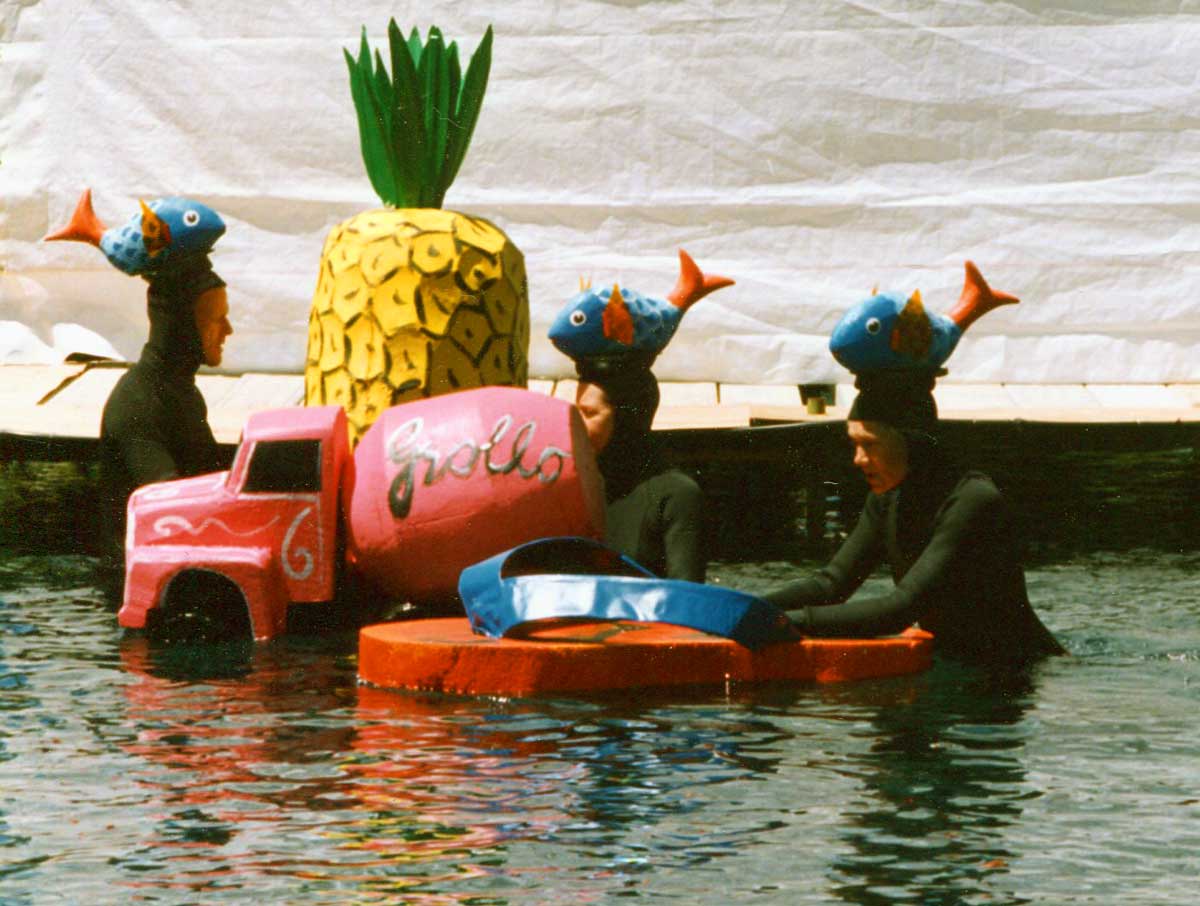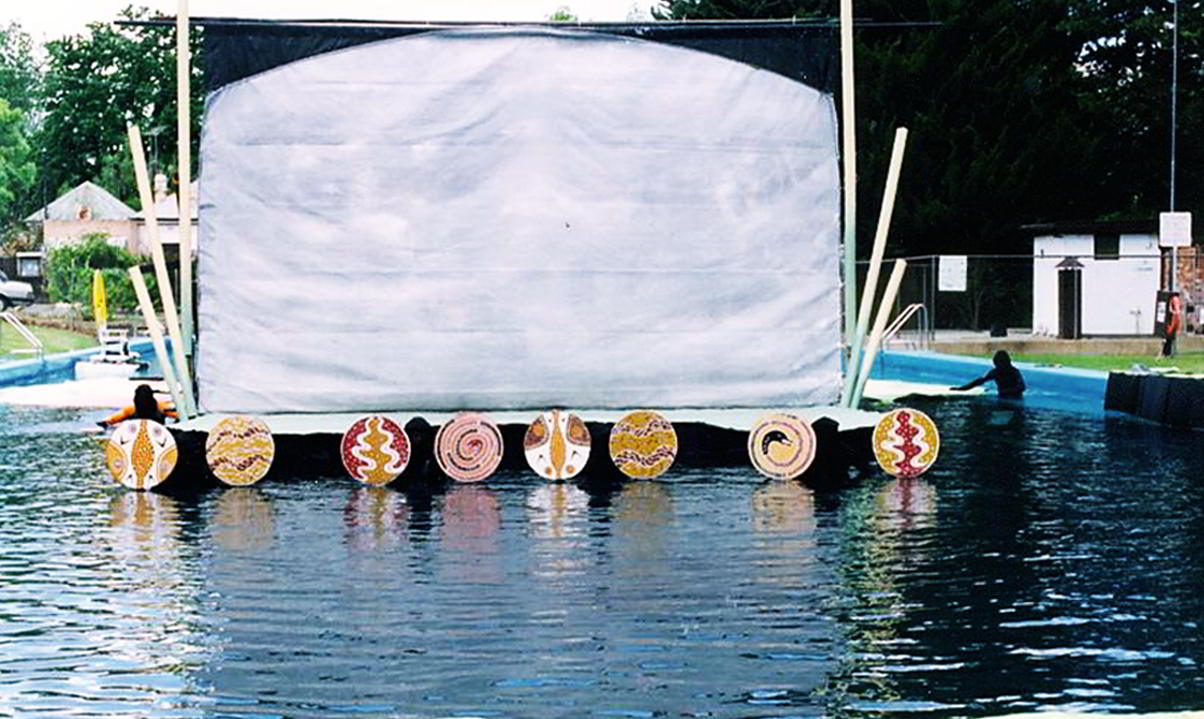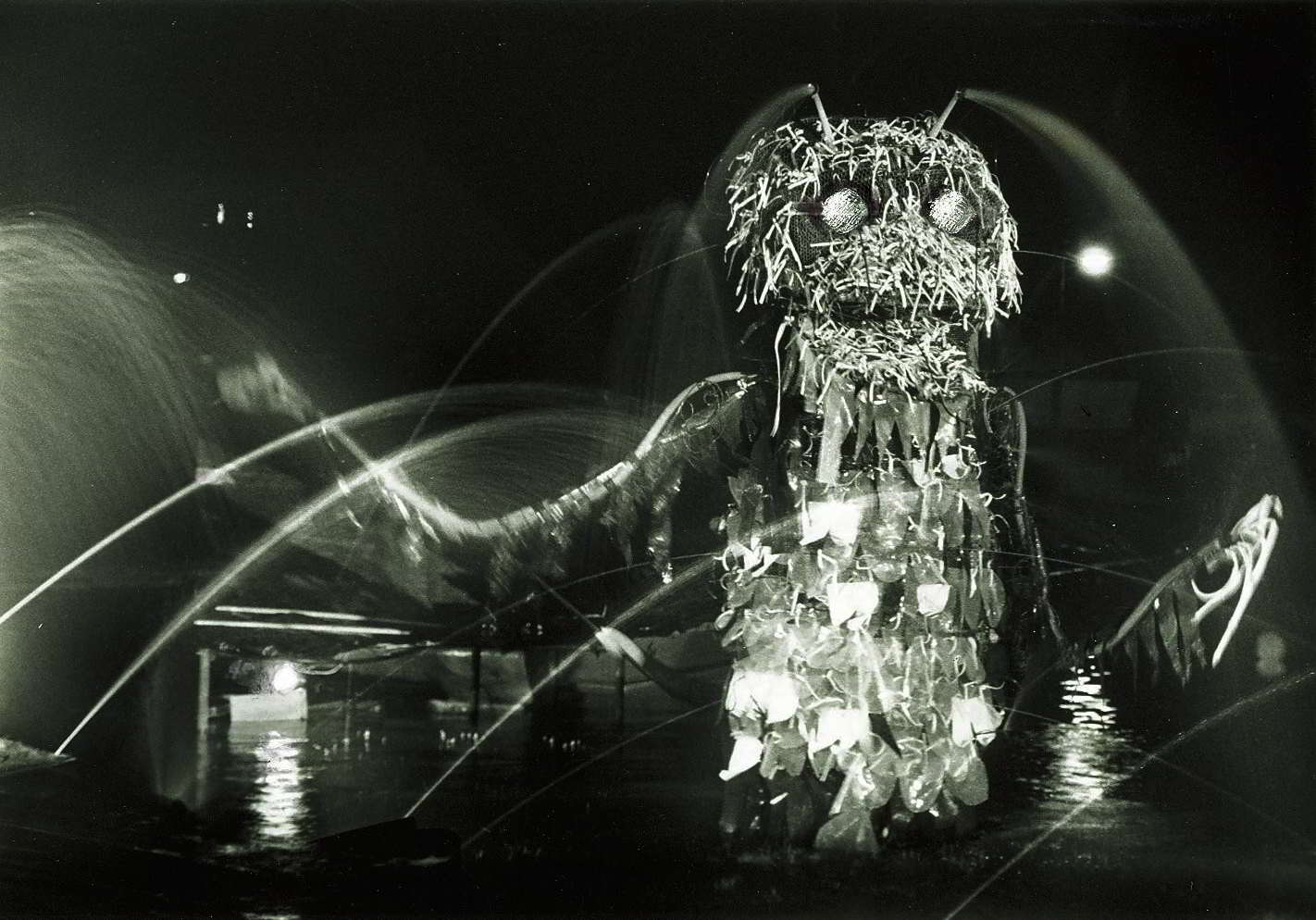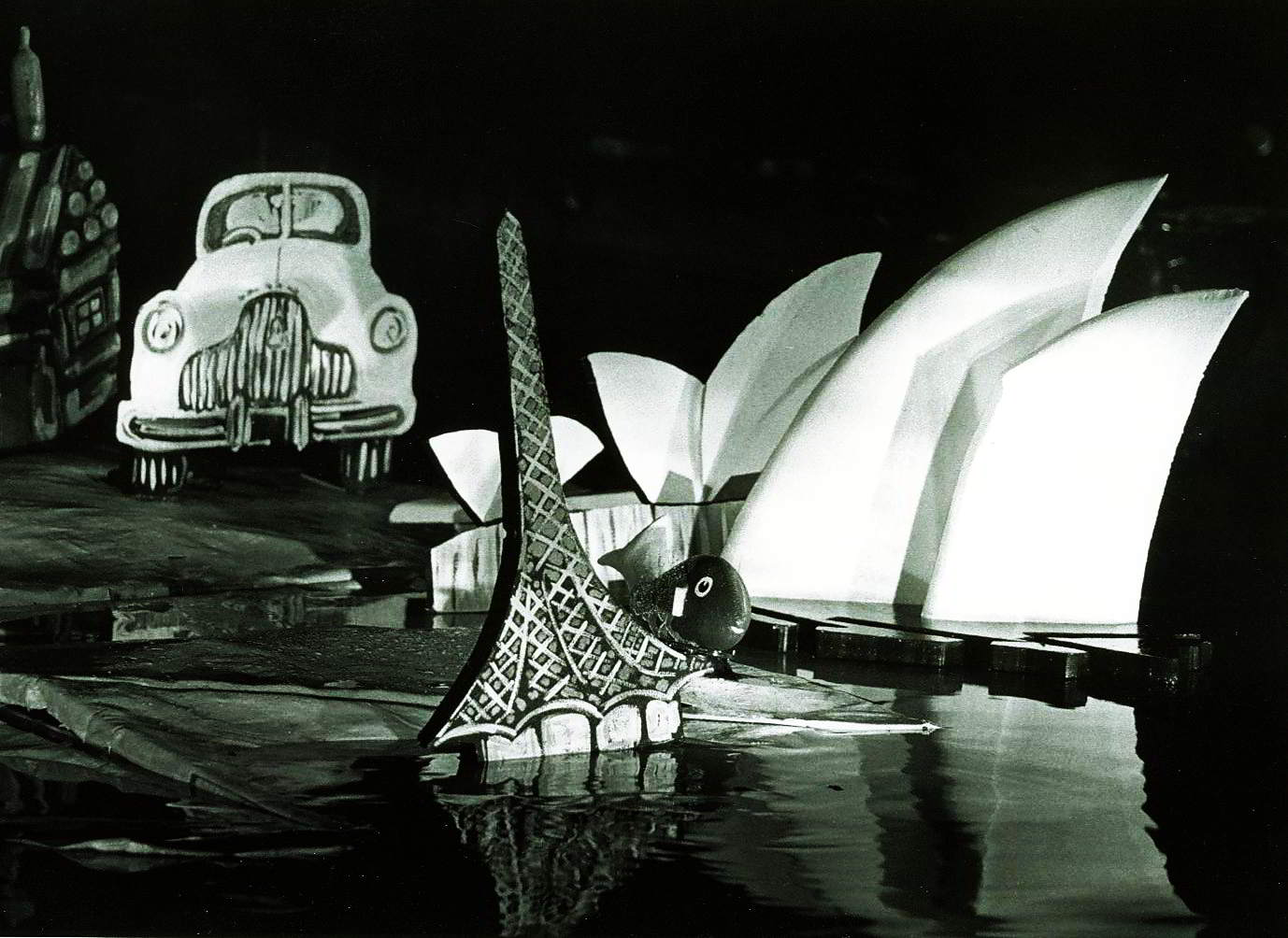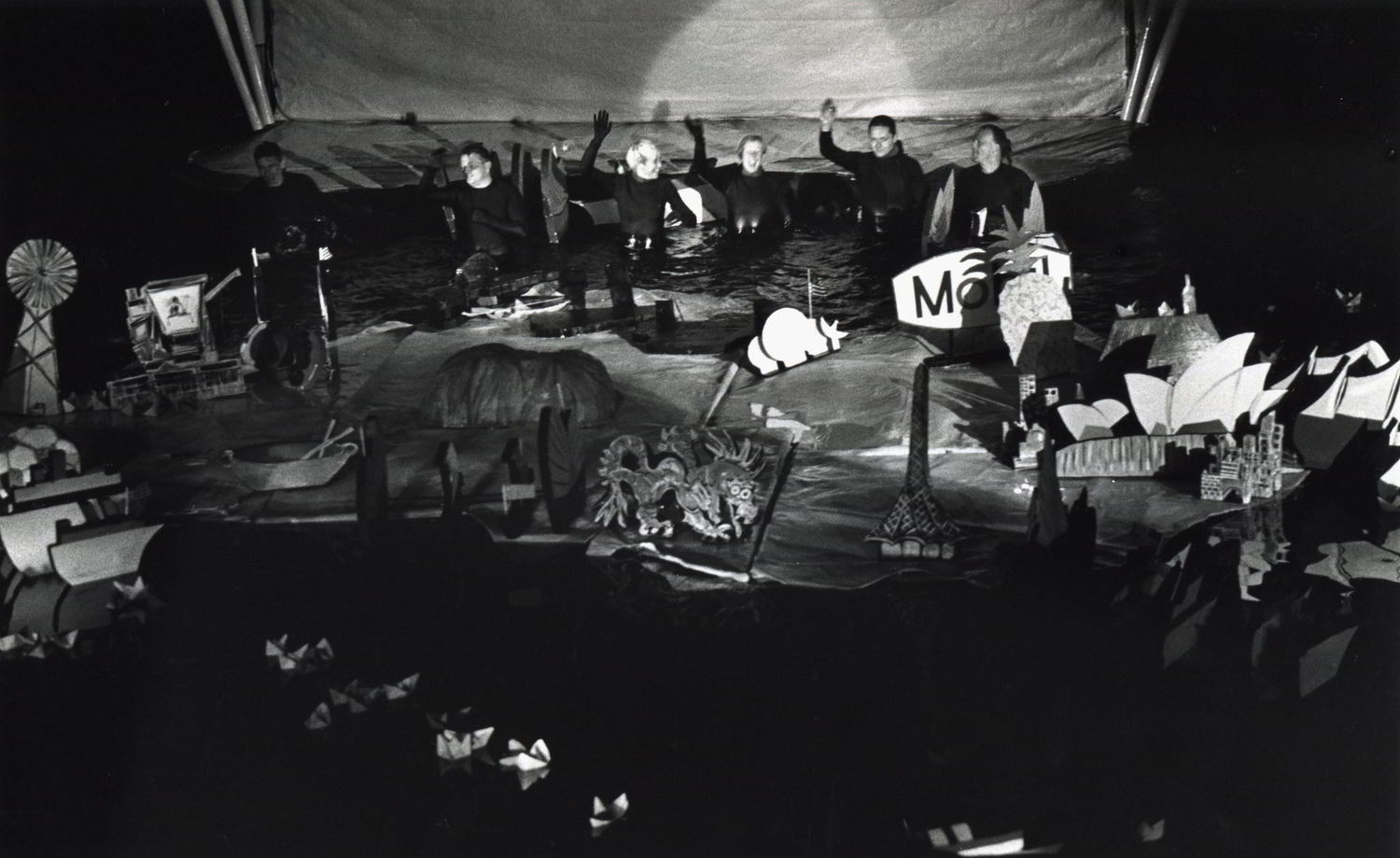| Premiere | 5 November 1988 |
| Venue | Castlemaine Swimming Pool, Castlemaine, Victoria |

WAVES OF CHANGE was created in response to the Australian Bicentennial Year (1988) and billed as ''a unique perspective on our island home and the waves of settlement that have come to make up our Australian community". The play was written by Melbourne comedian, Tony Rickards, and directed by Handspan's newly appointed Artistic Director, Trina Parker.
The concept of doing a show in a swimming pool had been brought to the company some years earlier by John Rogers, the idea broached (and shelved) at successive company Dreaming meetings for some time, and at last activated by Trina Parker and Philip Lethlean in this production for Australia's Bicentenary celebrations.
The 200 year anniversary provided an opportunity to investigate this innovative performance locale by creating a water spectacle about the island nation that is Australia through a comic history of its icons. Government support was available for such contemplative celebrations, or revelations, of its national identity in 1988, and made the ambitious and multifaceted, site-specific production possible.
WAVES OF CHANGE was developed with the Castlemaine Arts Festival and the City of Castlemaine who facilitated Handspan’s residency in the municipal pool for a month to rehearse the work.
It was cold in Castlemaine in October and the set-up for the show was complex. The winter-empty pool was lined with black plastic and scaffolding was erected for a central stage and to anchor objects and lights. The pool was filled, the puppeteers donned full-length wet suits to perform, and learned to work under the surface, in the dark.
A comic approach
WAVES OF CHANGE was a humorous and satirical look at Australia’s past that evolved in scenes introduced by a comic MC/auctioneer, Rod Primrose, around whom images appeared from beneath and across the surrounding water - all to be sold off to the highest bidder.
Rickards says that he is not particularly political, but then added 'I think I am more interested in justice', which to my way of thinking is the only real way of being political. he loves telling stories but whether they are comical or serious, his stories always have a point. Comedy for him is a very efficient way of communicating ideas
The play was accompanied by an original soundtrack composed by Marcia Howard from Australia’s iconic band, Goanna and mixed with recorded voiceovers, it began with swans gliding across the water as the island of Australia rose from beneath its surface. The pool stage was packed with animated objects and effects: floating constructions which transformed, water sprays, light beams, large scale rod puppets and an abundance of small images operated by wet suited scuba diving puppeteers.
The emerged continent became covered in whitefella symbols: the big pineapple, the ubiquitous thong and Grollo cement mixers. The show abounds in imaginative tricks. The dorsal fin of a threatening shark becomes Tasmania. The Sydney Opera House transforms itself into six pleasure boats. There is a storm with real rain, the apparition of a gentle indigenous ghost and a bicentennial pageant in Sydney Harbour.
Handspan's long stay in the town involved artists in a community residency and workshop program from which Images were added to the final show. A flotilla of tiny paper boats was made by the local primary school, and the Castlemaine Country Fire Authority contributed the firework finale.
Daunting complexity
The production was a huge undertaking and only partly a successful theatrical drama.
There are moments when the rhythm flags, when the expectation created by some floating apparition is not sustained and the apportioning and despoiliation of the land should have been handled with greater comic expertise. This is not to underestimate the daunting complexity and technological ingenuity of the undertaking, involving a potentially dangerous mix of water and electricity, under water manipulation, synchronisation of soundtrack and action, lighting and water effects, fireworks and who knows what else.
In the past words have been used by Handspan sparingly, or not at all, but for Waves of Change extensive voiceovers are used. The tone is jokey and the observations heavy with cliches. The best thing about the production were the visual effects. But for the rest Handspan was working under self-imposed difficulties which, for the audience were hampered on opening night by poor sightlines and biting cold. More thought needs to be given to developing the dramatic core of the work - the clash of black and white cultures.
Cold it was for patrons perched high on scaffolding bleachers outdoors on a wintery night. Local audiences were nevertheless very enthusiastic and the play was a unique contribution to Victoria’s Bicentenary Arts program.
this remarkably ambitious water-puppet play, Waves of Change portrayed the entire history of the Australian continent in a little over an hour. In the beginning, the land rose up from the water, took shape and was populated - first by the Aborigines and then by a mass of white swans. The wings of these birds changed into the sails of ships and soon a flourishing white civilisation occupied the land. 20 years later, a kind of used-Australia salesman auctioned off the country to massively inflated business figures before being diverted into a disturbingly bitter debate with a disembodied Aboriginal voice demanding the land back. It was a fascinating work, full of exciting imagery and challenging ideas.
Waves of Change was In many respects a much more effective and clear-sighted summing up of two centuries of white settlement than the infinitely more costly and less successful Manning Clark extravaganza. (History of Australia – The Musical)
| Creative team | |
|---|---|
| Based on a play by | Tony Rickards |
| Original concept | Philip Lethlean and Handspan Members |
| Director | Trina Parker |
| Stage & Lighting Designer | Philip Lethlean |
| Composer | Marcia Howard |
| Music arrangements | Marcia Howard & Chris Wilson |
| Performers | |
|---|---|
| MC | Rod Primrose |
| Puppeteer | Avril McQueen |
| Puppeteer | Paul Newcombe |
| Puppeteer | Andrew Hansen |
| Puppeteer | Annie Wylie |
| Voice Over Actors | Gary Adams, Kerry Armstrong, Michael Blair, David Cameron, Joe Geia, David Shepherd |
| Production team | |
|---|---|
| Production construction | Philip Lethlean, Sue Davis, Laurel Frank, Paul Newcombe, Cliff Dolliver, Horse (Dolphins) and performers |
| Production/stage manager | Liz Pain |
| Stage technicians | Cliff Dolliver, Liz Pain, Paul Gabbert, Sue Davis |
| Lighting operator | Philip Lethlean |
| Sound operator | Marcia Howard |
| Fireworks | Ted Scholes |
| Ski jet operator | Grant Kramer |
| Music engineer | Chris Wilson (Studio 7) |
| Soundtrack engineers | Gary Cranston & Wayne Fox |
| Publicity & administration | Stephen Armstrong |
| Work experience students | Luke Hodgson, Michael Treloar & Jodie Letts |
| Season | |
|---|---|
| 5 & 6 November, 1988 | Castlemaine Municipal Pool, Castlemaine Festival, Victoria |
| Total performances | 2 |
| Total audience | 1,049 |

